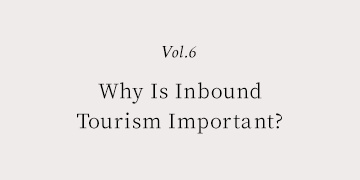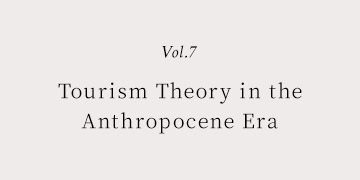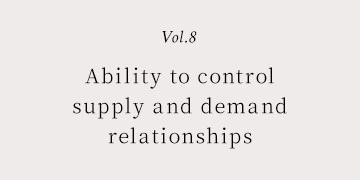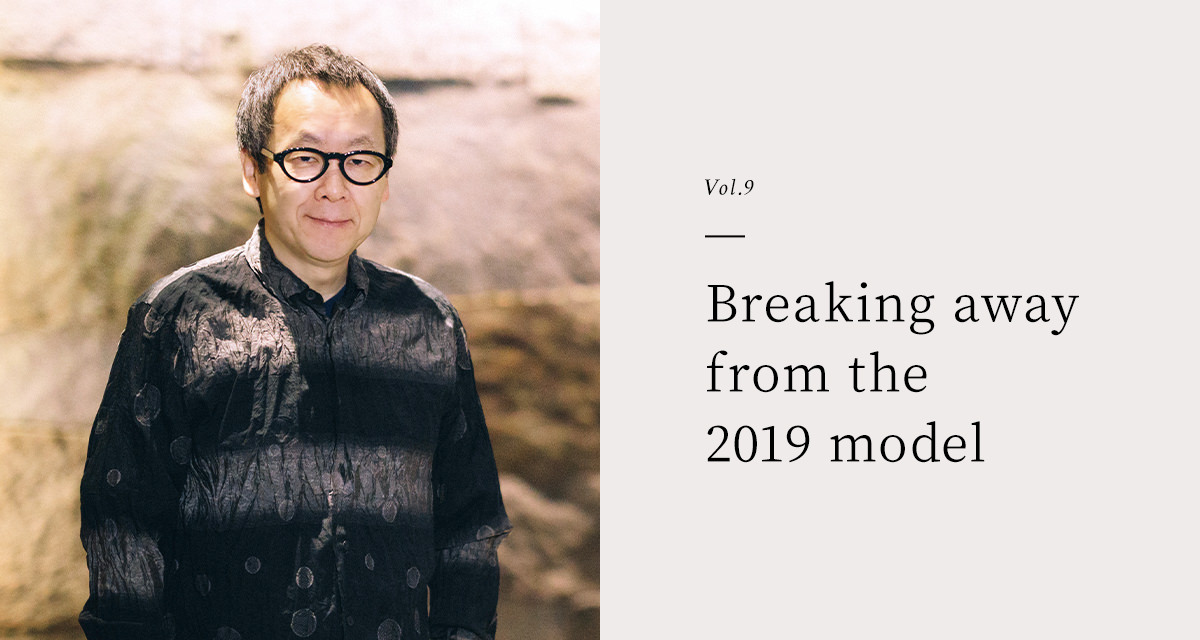
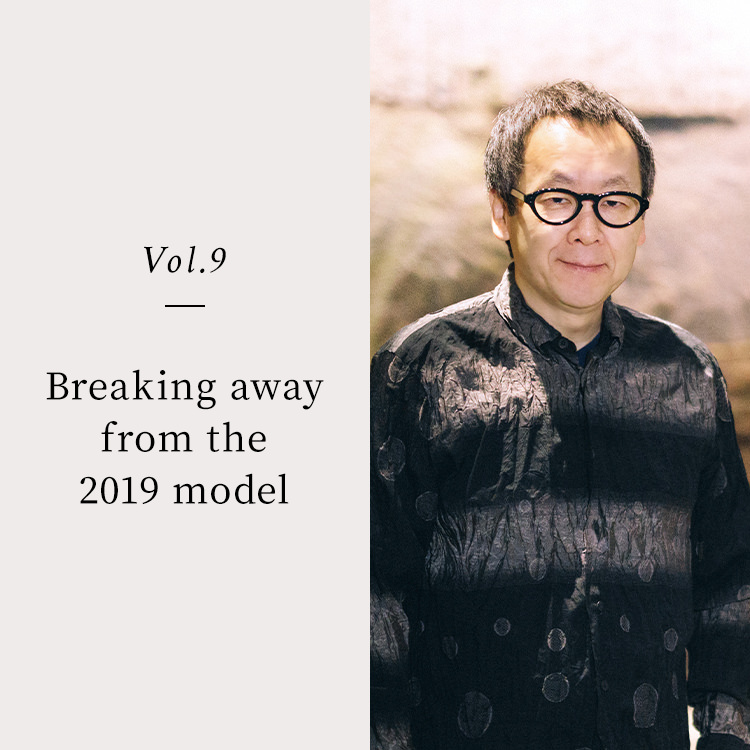
Japan's tourism industry is finally about to return to a growth stage due to the significant relaxation of border measures in October 2022. In many parts of the world, demand has rapidly returned to a recovery phase a step ahead, and the challenges have changed to a labor shortage. The issue will also be solved gradually from 2023 to 2024. What I am paying more attention to than these immediate challenges is the change in attitudes in the world's advanced tourist destinations, which is changing the way of tourism in the long term.
The origin of the change is the positive aspects of zero tourism in the COVID-19 pandemic on the region. In many sightseeing cities, beautiful beach, and mountains of magnificent scenery, local residents once again experienced the comfort of being tourist-free.
In Venice, congestion has decreased and the lives of local residents have become more comfortable. In Hanauma Bay, a popular beach in Hawaii, the water quality improved, the nature recovered, and seals are now coming to the beach. In Indian city, air pollution has decreased and the Himalayan landscape has become visible from the rooftops of the house. These are reported in news and SNS worldwide.
I felt similarly in my ski life. When I stood on a popular snowy mountain for Back Country Ski, I saw untouched beautiful snow surface spreading underneath because there was no inbound, and I shouted "Bravo." During the last two seasons, even the Asahidake Ropeway and the Tanigawadake Ropeway were able to fully enjoy the snowy mountains of Japan without having to wait an hour for a winter morning ride. For two and a half years of the COVID-19 pandemic, I was struggling as a corporate manager, but as a skier I had a good time and hoped that this would continue in my mind. Even in Kyoto, where overtourism was becoming a problem, it is quite natural for people who are not directly involved in tourism to have the same feeling.
Would we now be willing to return tourism to the 2019 model? The momentum is growing that true sustainability cannot be achieved without appreciation from the local community, and instead of returning to the 2019 model, the movement to search for new form of tourism is beginning quietly.
Hanauma Bay in Hawaii took its first step. Until 2019, an average of 4000 tourists visited each day. Now, it’s limited to 1000 visitors and introduced the process of pre-online reservations. In addition, the admission fee was doubled, and admission is prohibited in two days out of one week, setting for the period to recover the water quality.
In August 2022, I stayed in New Zealand for the first time in three years, enjoying ski life and interacting with people from the local business community. Among them, Queenstown's head of DMO (Note) talked about the policy for the promotion of post-COVID-19 that would stop chasing the number of tourists and shift to seeking quality. In terms of quality, the idea is not to focus on high unit prices or wealthy tourists, but on tourists who have respect for the local cultures. He said that group tours, like staying only for one night, taking pictures with the scenery in the background, and then moving to the next place on the next day, create crowds but they are not appreciated groups of customers by the local community. The target is defined as tourists who stay for at least a few days, get out of hotels, enjoy local foods at restaurants and cafes in town, and are interested in Maori culture. The reason for this is not only that we can expect economic benefits to restaurants and shops in the town, but also that communities that are not directly related to tourism will feel welcome if visited by these people. And this kind of tourism leads to New Zealand's branding in the long term. In other words, it is a new idea of thinking more widely than before about stakeholders who receive returns from tourism.
I have decided to call this "stakeholder tourism." In the tourism circle, not only tourism business operator but also local communities, local environments, and visiting tourists are included, and each can feel a fair return from tourism.
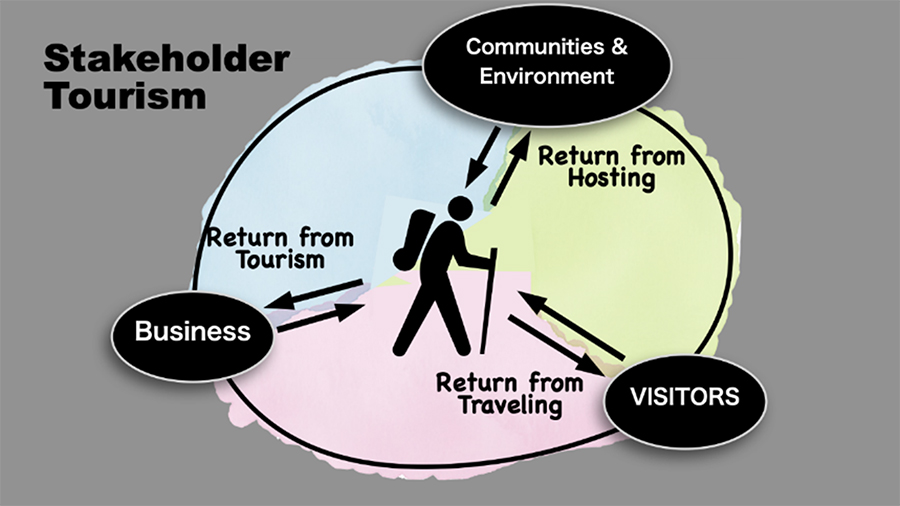
One of the characteristics of stakeholder tourism is that it includes tourists visiting there. Until now, the objective of tourism promotion has been to respond to customers’ requests and maximize the number of visitors, but stakeholder tourism will convey local values to visitors and ask them to follow the rules. In August 2021, Travel & Leisure magazine published an article titled "6 things to become a responsible tourist for Hawaii." Since 2021, such articles have become prominent in travel information magazines and newspapers around the world.
Looking at tourism in various parts of Japan, trying to escape from the COVID-19 pandemic, I see many targets for return to the 2019 model. But it is a postponement of the problem, and it can even become outdated. The 2019 model for Japanese tourism had a positive aspect in terms of figures, but looking at the contents, it had many problems. Reviewing the issues faced at the time and building stakeholder tourism while resolving them should lead to long-term sustainability.
So what should Japan's tourism industry do now in order to shift to stakeholder tourism?
The first thing to do as a public tourism policy is the leveling of demand. Tourism demand, which is concentrated on 100 busy days a year, has created many problems such as congestion, high unit price, and low productivity. 70% are non-regular employees in an attempt to avoid becoming an excessive workforce in 265 days, which hampers wage increases and higher value-added. Domestic long holidays should be distributed by region, and inbound tourists should move away from the situation of over-dependence on some parts of Asia, and the system should be shifted to attracting customers from around the world where holidays are dispersed.
What tourism operators need to tackle is the continuous strengthening of microtourism. After working on the COVID-19 pandemic, I was convinced that microtourism has significant benefits for continuing after the COVID-19 pandemic. This is an opportunity for local residents to directly feel the value of the tourism business. Microtourism will also be a positive contributor to demand smoothing, regional employment, improving wages for tourism staff (local residents).
What the public and private sectors should work together on is the promotion of consecutive nights. One of the challenges of domestic travel is that the average number of stays is less than two nights. It has increased the ratio of transportation costs to travel expenses, and has weakened the economic benefits that fall into the region. At the same time, transportation accounts for half of CO2 emitted by the global tourism industry, and promoting continuous accommodation also contributes to global environmental measures.
Demand leveling, microtourism, and the promotion of consecutive-night stays are directly positive for stakeholders who invest in tourism as well as local communities and the environment. Hoshino Resorts intends to contribute to the construction of a new model for post-COVID-19 tourism in Japan by deliberately improving the quality of management methods in these fields.
- (Note)
- Abbreviation of Destination Management/Marketing Organization (Tourism Area Development Corporation)











